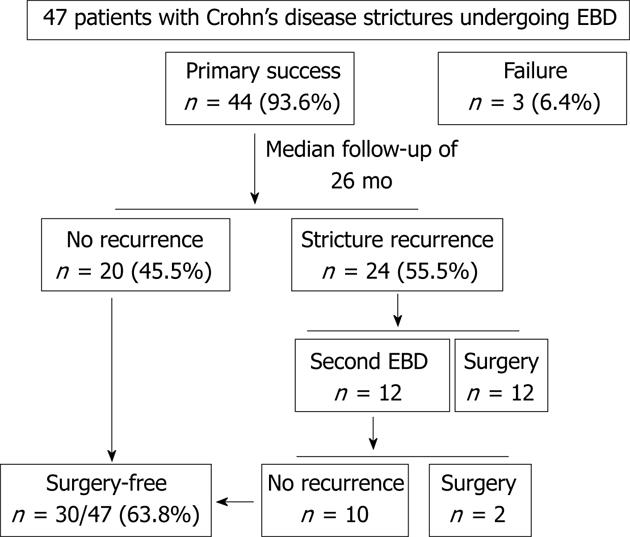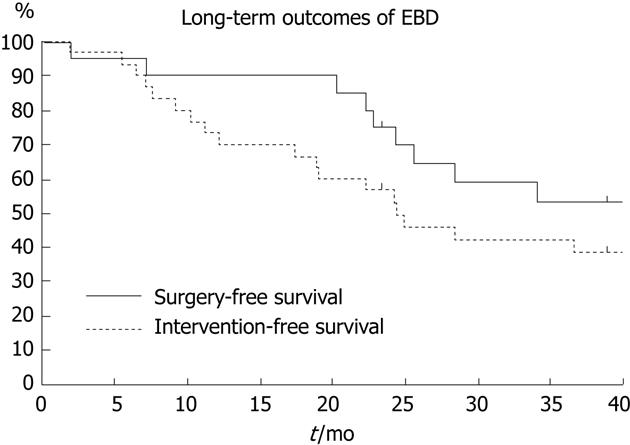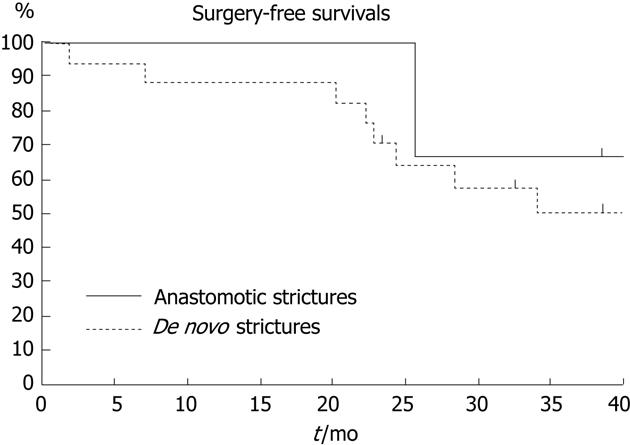Copyright
©2013 Baishideng Publishing Group Co.
World J Gastroenterol. Jan 7, 2013; 19(1): 86-91
Published online Jan 7, 2013. doi: 10.3748/wjg.v19.i1.86
Published online Jan 7, 2013. doi: 10.3748/wjg.v19.i1.86
Figure 1 Overview of treatment outcomes for 47 strictures.
Long-term outcomes were evaluated for the 44 successfully-treated strictures after a median follow-up of 26 mo (range, 2-172 mo). During the observation period, re-strictures after endoscopic balloon dilatations (EBDs) occurred in 26 cases (60.5%). Fourteen of these 26 re-stricture cases underwent EBD again, but in two EBD failed and surgery was ultimately performed in both cases. Twelve of the 26 re-stricture cases were initially treated surgically when the re-strictures occurred. Finally, 30 of the 47 strictures (63.8%) were successfully managed with EBD, allowing surgery to be avoided.
Figure 2 Long-term outcomes of endoscopic balloon dilatation by the Kaplan-Meier method.
Intervention-free survival evaluated by the Kaplan-Meier method was 75% at 12 mo, 58% at 24 mo, and 43% at 36 mo. Surgery-free survival evaluated by the Kaplan-Meier method was 90% at 12 mo, 75% at 24 mo, and 53% at 36 mo. EBD: Endoscopic balloon dilatation.
Figure 3 Surgery-free survivals-anastomotic vs de novo strictures.
The 16 anastomotic strictures were associated with significantly better surgery-free survivals than the 28 de novo strictures (log-rank test: P < 0.05).
- Citation: Endo K, Takahashi S, Shiga H, Kakuta Y, Kinouchi Y, Shimosegawa T. Short and long-term outcomes of endoscopic balloon dilatation for Crohn’s disease strictures. World J Gastroenterol 2013; 19(1): 86-91
- URL: https://www.wjgnet.com/1007-9327/full/v19/i1/86.htm
- DOI: https://dx.doi.org/10.3748/wjg.v19.i1.86















